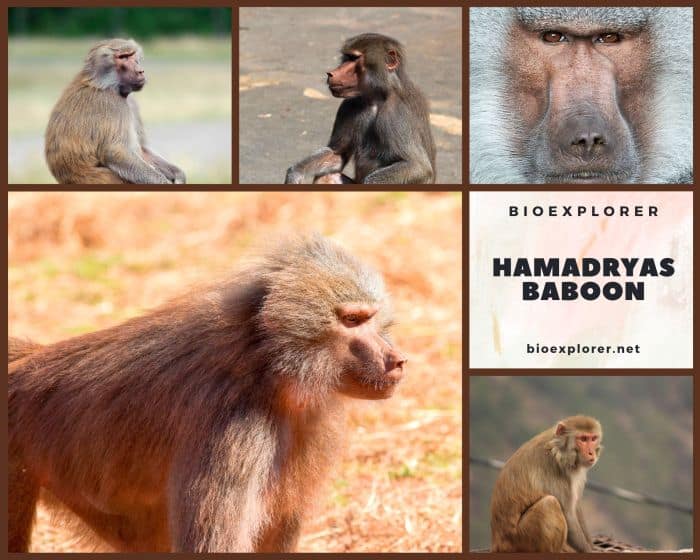
| Animalia | Primates | Cercopithecidae | Papio | Papio hamadryas |
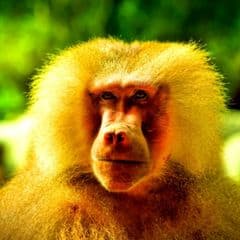

- Common Name: Hamadryas Baboon
- Taxonomy Classification Year: 1758
- Monkey Size: 61.0 to 76.2 cm (24.02 to 30.00 in)
- Skin Color(s): Grayish-brown to olive-brown
- Habitat: Desert or dune, savanna or grassland, mountains
- Diet: Omnivorous
- Native Countries: Ethiopia, Somalia, Eritrea
Hamadryas Baboon Distribution
Hamadryas Baboon Characteristics
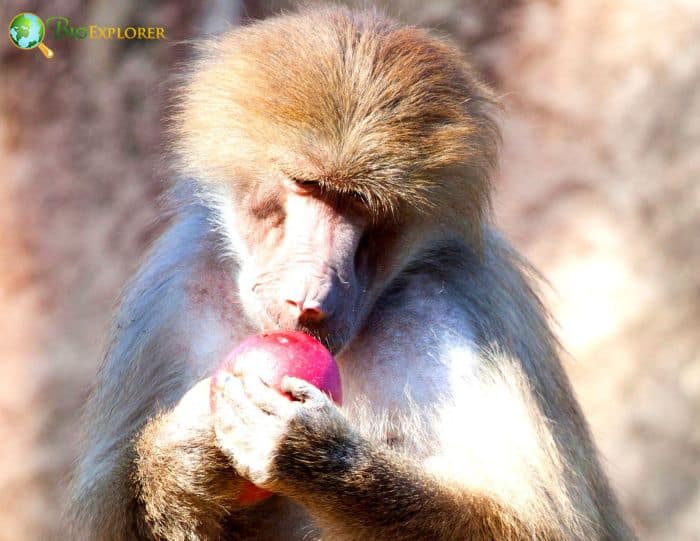
The Hamadryas baboon[1] (Papio hamadryas) is a baboon species in the Old World monkey family.
- It’s the northernmost of all baboons and is native to the Horn of Africa and the southwestern region of the Arabian Peninsula.
- These species are highly sexually dimorphic in size and fur character. Adult males weigh about 21.5 kg and females approximately 9.4 kg.
- The coat of the males is grayish, mainly brown, with the belly colored like the back or darker.
- The cheek hair is lighter and forms “whiskers” that merge into a distinct, fluffy silver mane.
- The long back hair is wavy. Females are solid olive-brown. The skin can be highly colored in some individuals.
- In both male and female species, the skin surrounding the ischial callosities is bright red or pink.
- Males have a similar fur color on the face and muzzle, while females have dull, grayish-brown faces.
- The tail is long and curved, with an elegant arch at the base.
- The natal coat is black, although it sheds around 6 months of age when it is replaced by olive-brown fur like that of the adult female.
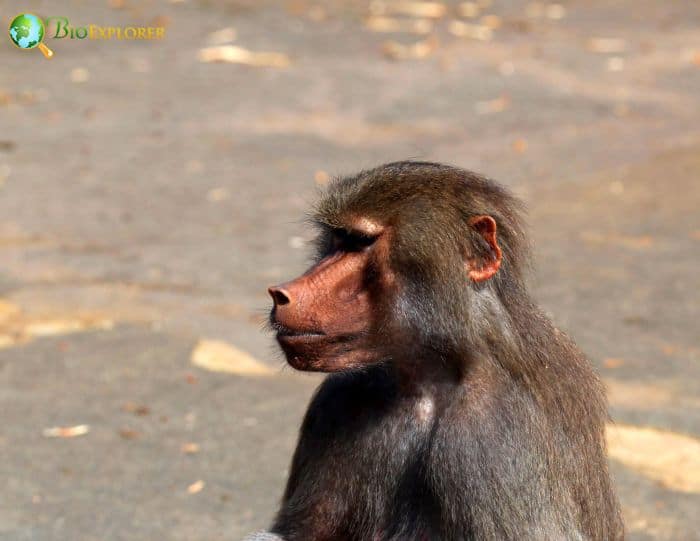
What Eats Hamadryas Baboons?
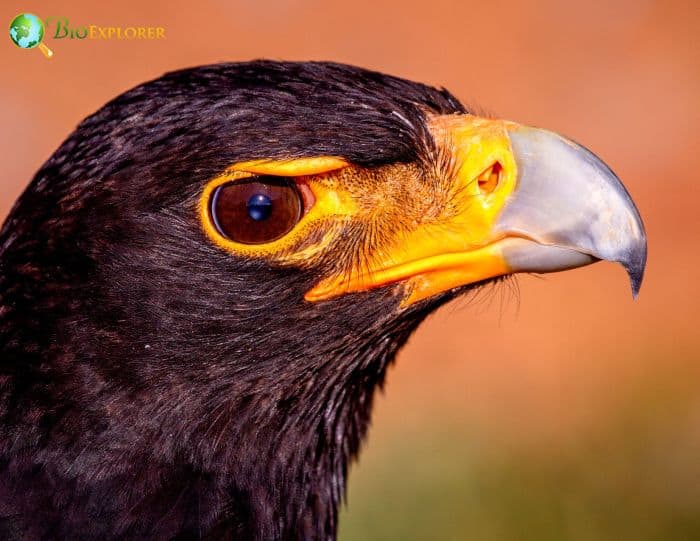
Verreaux’s Eagle (Aquila verreauxii), Leopards (Panthera pardus) and Caracals (Caracal caracal) are the predators of Hamadryas Baboons[§] in the wild.
Hamadryas Baboon Facts
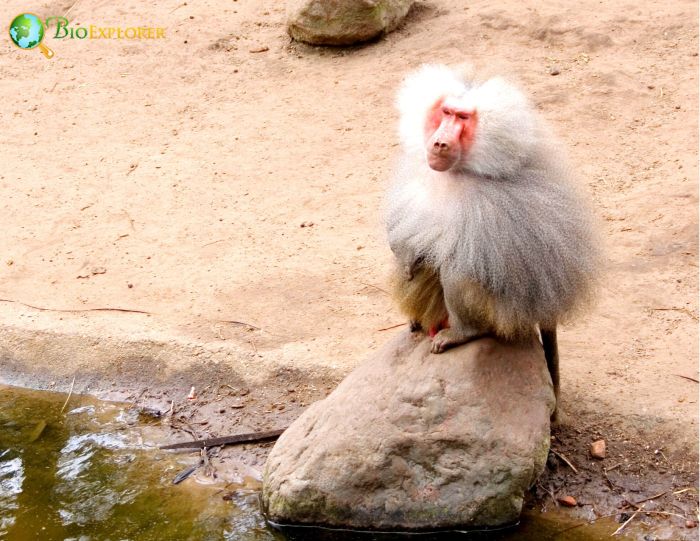
- The Hamadryas baboon was a sacred animal to the ancient Egyptians. It appeared in various roles in ancient Egyptian religion, hence its alternative common name, “sacred baboon“.
- They are very social animals, displaying a complex, multi-level social structure.
- Groups of Hamadryas baboons appear to play an essential role in enabling baboons to compete for roosting and access to watering holes.
- Males seem to bond with kin throughout their lives. In this respect, Hamadryas baboons differ from other representatives of the Papio genus.
- All hamadryas baboons except infants grunt rhythmically when approaching another animal to indicate intentions of an affiliation.
Suggested Reading: Various Types of Monkeys
Cite This Page
APA7MLA8Chicago
BioExplorer.net. (2025, December 08). Hamadryas Baboon. Bio Explorer. https://www.bioexplorer.net/animals/mammals/monkeys/hamadryas-baboon/.
BioExplorer.net. "Hamadryas Baboon" Bio Explorer, 08 December 2025, https://www.bioexplorer.net/animals/mammals/monkeys/hamadryas-baboon/.
BioExplorer.net. "Hamadryas Baboon" Bio Explorer, December 08 2025. https://www.bioexplorer.net/animals/mammals/monkeys/hamadryas-baboon/.











